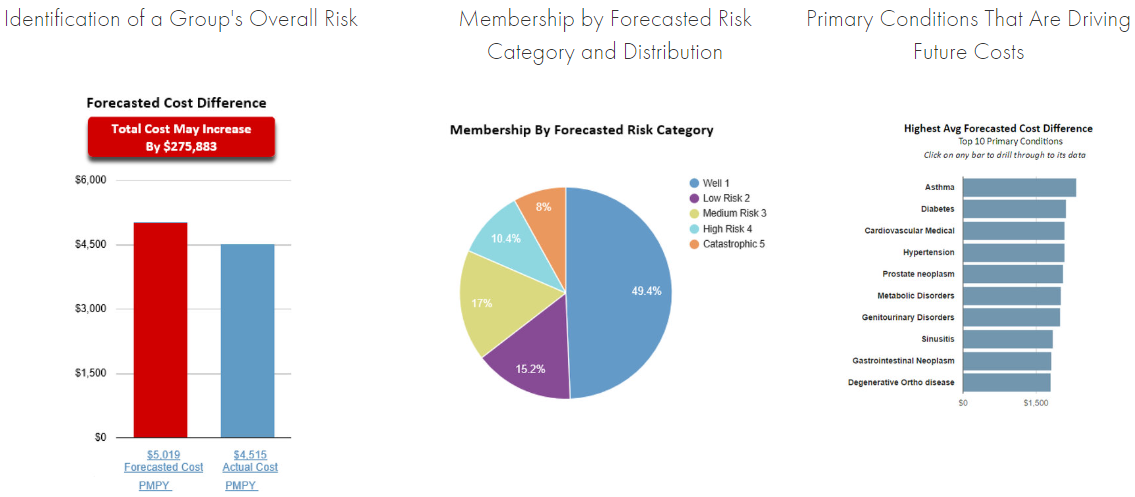HCRM provides clinical predictive modeling to a variety of clients using Health Risk Monitor (HRM). This system utilizes the award winning MITCH predictive modeling engine. The MITCH engine is used to create a model of how health care "works" for a given population of people. The system uses forecasting algorithms and artificial intelligence to create a large, complex mathematical model for the population. The advantage of the prediction engine is its use of the right combination of linear and non-linear models to correctly "fit" the characteristics of the client's population.
HCRM can provide full service, collecting all the data needed by the HRM system and provide results on our on-line user interface. We can also send data extracts for building a database to provide input into your own solution. If your organization prefers to keep data in-house and has the resources available, HCRM can implement an on-site model allowing you to collect and process the data. Specialized models for specific populations, such as a collection of fully-insured, small-group and medical plans can be created. Likewise, Medicare and Medicaid models are available for use with those populations.
The HCRM model predicts the clinical events and outcomes for each member in the population and attaches a dollar value to those predictions. The models accurately predict cost by clinical risk driver, pharmacy cost, emergency room visits, days inpatient:
HRM’s risk measures include:
- Relative risk index compared to the national norm
- Percentile risk for being in an acute care environment (ER or Inpatient)
- Risk of non-compliance with national standards of care for 19 chronic conditions and five preventive categories
- Motivation to maintain or improve healthy behaviors
HRM allows clients to quickly and accurately identify and stratify their population into cohorts of interest. Many population health management and disease management clients utilize the system to find people with diabetes, coronary artery disease or asthma and further assess them by motivation and/or compliance with gaps in care. Likewise, large case management can prospectively identify members who will be inpatient in the next 12 months and identify their primary illness. Stop-loss carriers can identify future large cases in underwriting or evaluate individuals in a spec alert report. Hundreds of values are available for filtering members either alone or in combination with one another.

